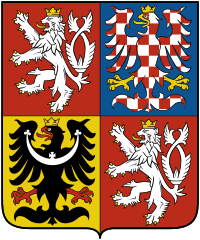Rescue of Funeral Architecture in Statically Emergency Condition in the Jewish Cemetery in the Jewish Cemetery in Prague 3, Izraelska Street

Published
| Region | Prague |
|---|---|
| Title of the Programme | Cultural Heritage and Contemporary Art - programme area no. 16 |
| Title of the Project | Rescue of Funeral Architecture in Statically Emergency Condition in the Jewish Cemetery in the Jewish Cemetery in Prague 3, Izraelska Street |
| Number of the Project | --- |
| Project Promoter |
Jewish Community of Prague |
| Objective of the Project |
As a result of hostile social conditions toward Jewish monuments up until 1990, only minimal maintenance was carried out, funeral buildings fell into disrepair, and many parts of the cemetery turned into impenetrable thickets, into which the wind knocked over old trees and dead branches. Many tombstones spontaneously uprooted, fell to the ground, some of them were broken. The poor condition was worsened by repeated vandalism and theft. Valuable art details and architectural elements gradually began to wear off. The New Jewish Cemetery in Prague 3, founded in 1890, is an extremely important element of the history of Prague's Jewish community and the fate of particular individuals, families and relationships. Due to the negligible amount of surviving archival documentary that during World War II often completely disappeared, it is even more important and the effort to rescue the tombstones is significant. With an area of over 10 hectares and more than 27,000 tombstones, it is the largest cemetery in the country. Most of the surviving tombstones are interesting stone masonry pieces with sculptural decoration and symbolism, complemented by floral ornaments with Jewish symbolic motifs. Tombstones are valuable evidence of the development of funeral sculptures from the late 19th century through a variety of artistic forms of Art Nouveau to the Neo-Classicism and Functionalism of the twenties and thirties of the last century. As the material, in the vast majority of cases is black or dark gray, machine-cut granite is used, however we also find a significant share of imported, or Slivenec marble, limestone, slate or sandstone. Many tombstones are made in a combination of materials, especially with regard to the foundation blocks, inset with descriptive panels, epitaphs, additional decoration, glazing of epigraphical plates, metal fencing of tomb frames, art ornaments and relief inscriptions made of colored metal etc. The most pressing problem that harms the monument as a whole today, in addition to theft and vandalism, is mainly the progressively deteriorating condition of the static stability of gravestones and tombs. Many of them, due to the effects of erosion influences or simply outliving the original foundation structure are gradually collapsing. These collapses are causing irreversible damage to the mass graves and their individual parts, both to those falling, and to those in the countryside, previously undamaged. The unstable gravestones are also a serious danger to visitors to the cemetery and its employees. The main aim of this project is the design of work associated with the stabilization of the tilted tombstones, or even re-erecting the approximately 563 tombstones and then the execution of the restoration work on three large tombs. |
| Approved grant |
approximately 179 429 EUR |
| Project Duration | Start date: 1st January 2015, End date: 30th April 2016 |

